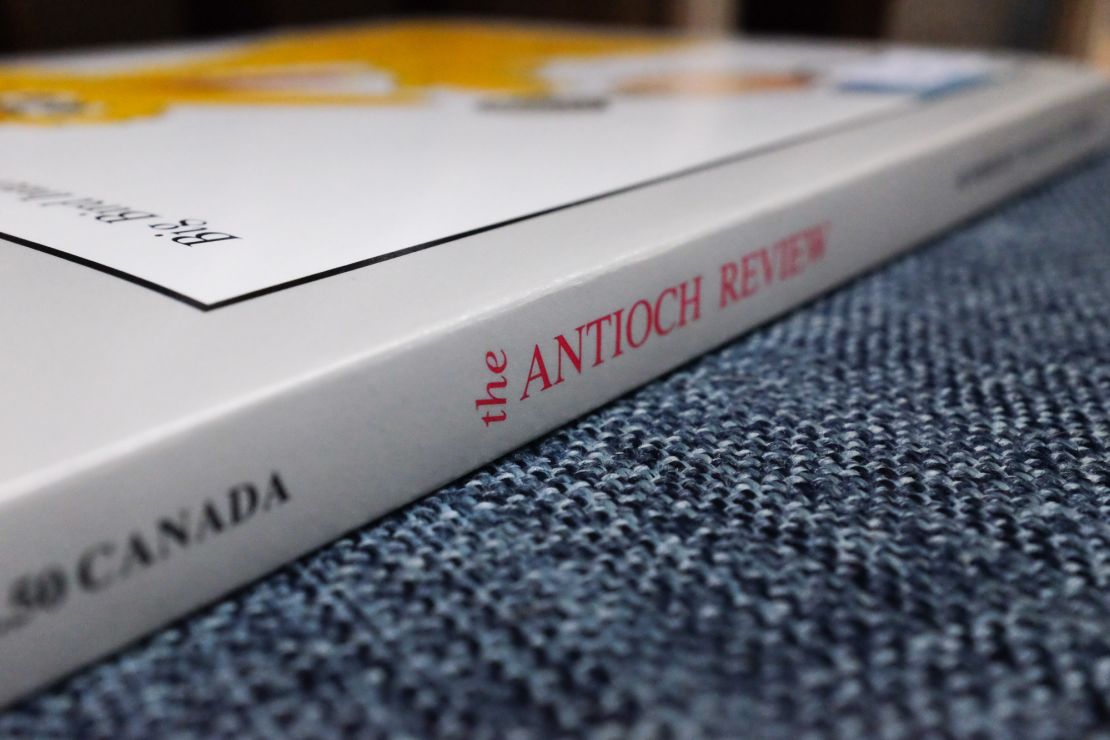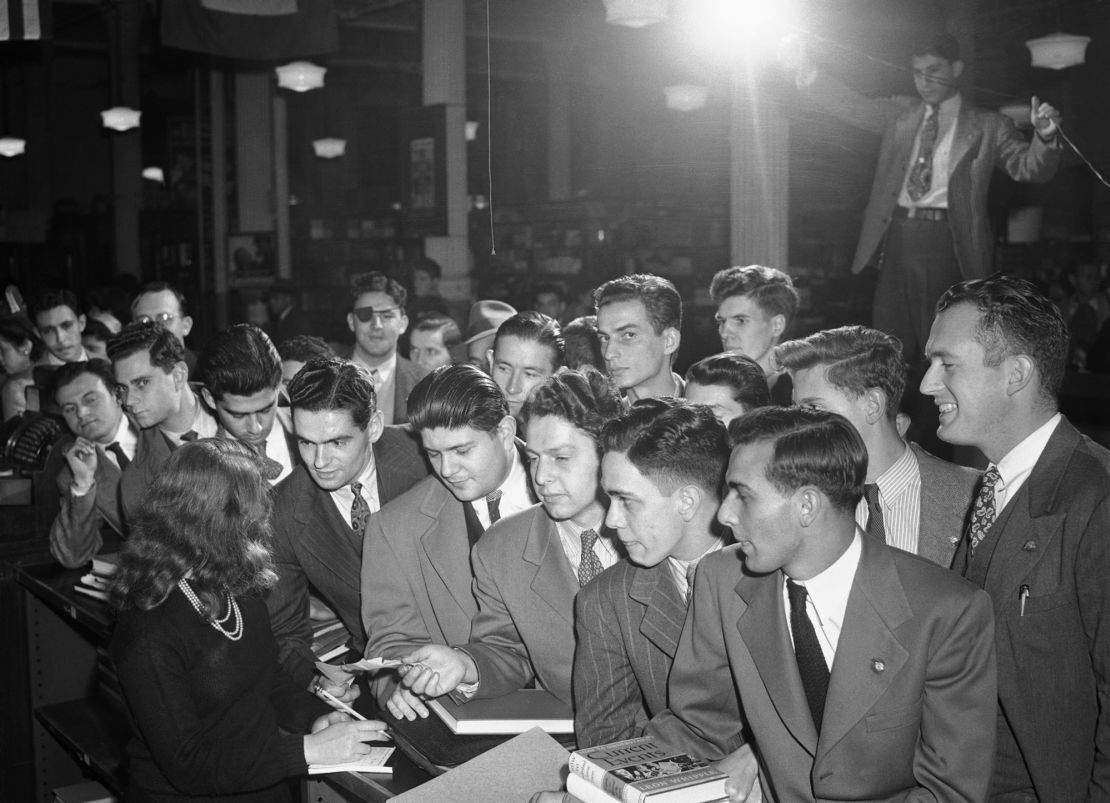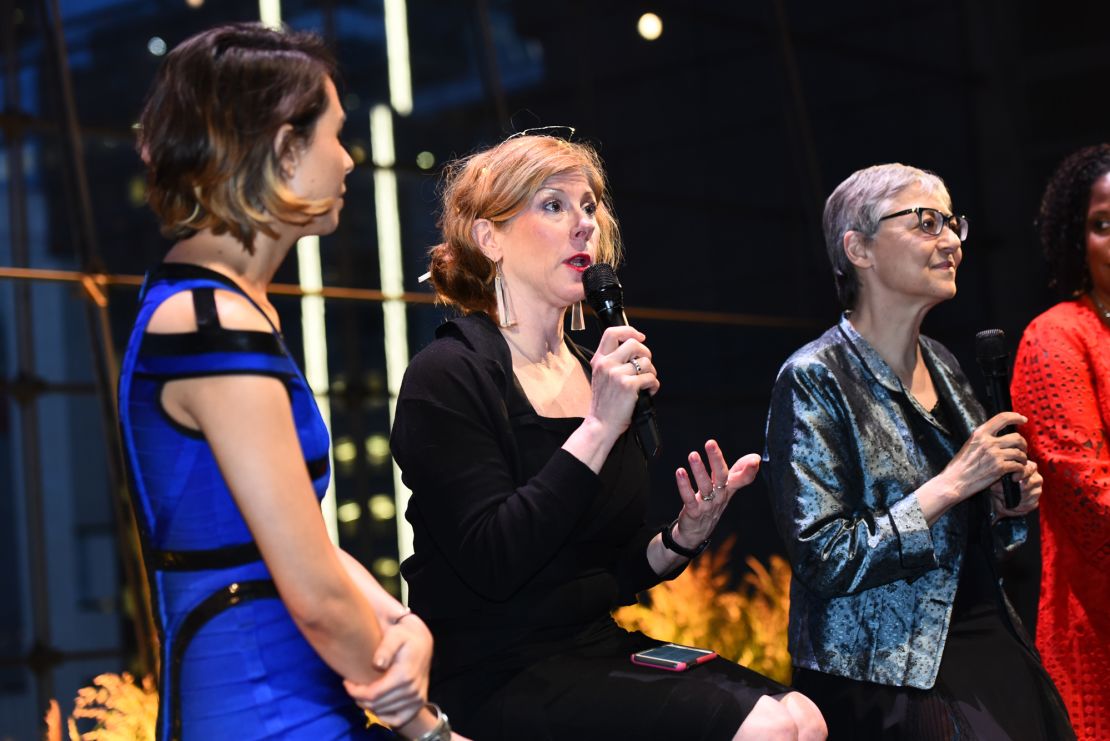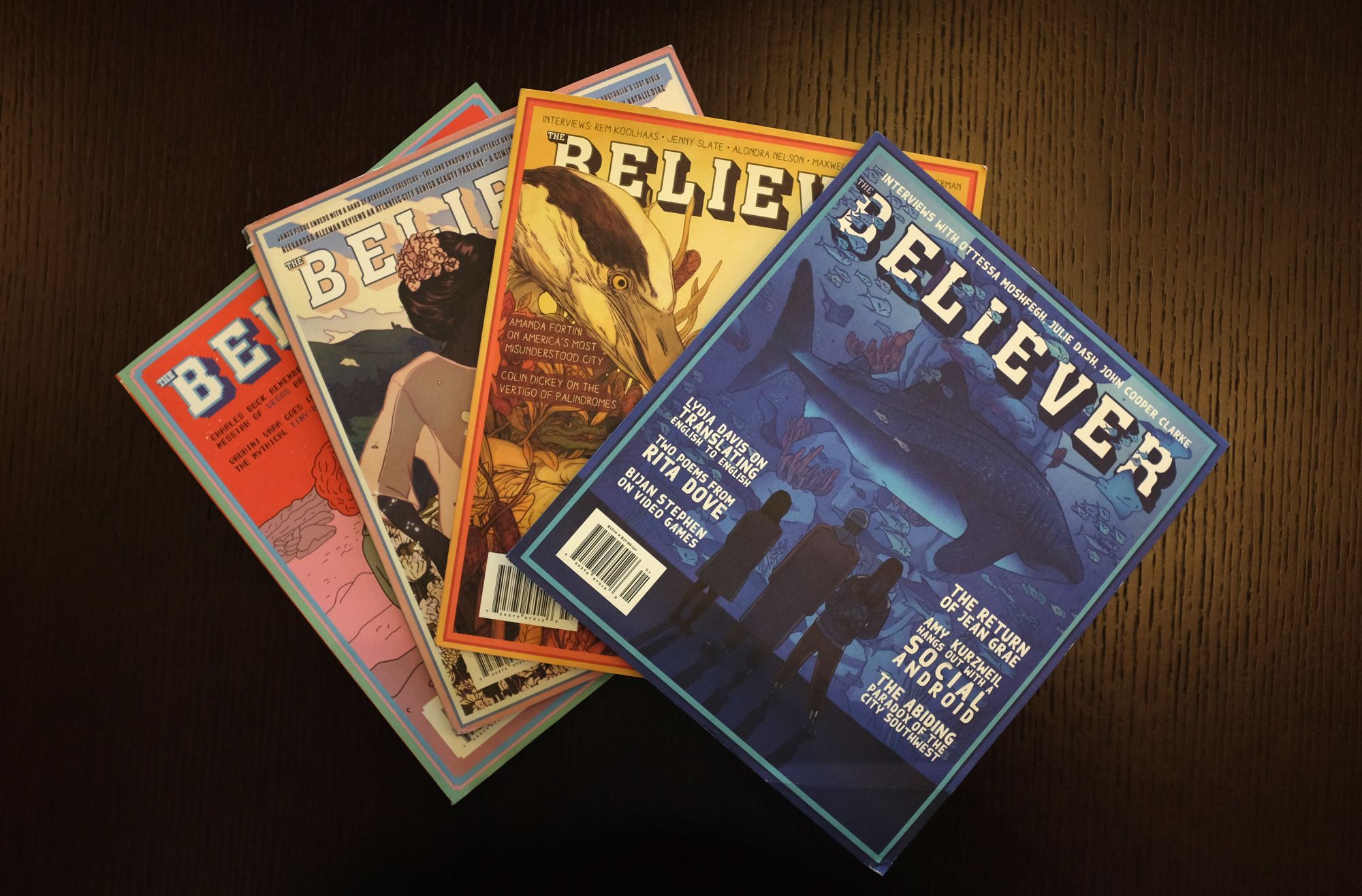The Believer was once at the top of the literary magazine game.
A leading journal of art and culture, The Believer published the work of icons like Leslie Jamison, Nick Hornby and Anne Carson. It won awards, it launched careers – it created a home for off-beat, quirky writing. When the Black Mountain Institute at the University of Nevada bought the magazine, observers spoke of Las Vegas as a potential new hub for literary arts.
Then, in October of last year, the college announced it was shutting the magazine down in early 2022, citing the “financial impact of the Covid-19 pandemic.” In a statement explaining the decision, the dean of the school’s College of Liberal Arts called print publications like The Believer “a financially challenging endeavor.”
The news came months after an incident where the editor in chief exposed himself during a video call with staff and subsequently resigned. Staffers’ complaints about him were also detailed in a Los Angeles Times report.
Still, the announcement caused ripples throughout the literary world – Jamison, known for her book of essays, “The Empathy Exams,” tweeted that she was “heartbroken” over the news when it was announced.
The Believer’s shuttering isn’t isolated. Across the country, universities are slowly, quietly, cutting funding and shutting their literary publications down. Even magazines not connected to universities are closing their doors or changing publication strategies – a trend made worse by the ongoing Covid-19 pandemic.
Colleges everywhere are cutting lit mags
Literary magazines aren’t exactly flashy – they aren’t covered in photos of beautiful people draped in designer clothing; they don’t contain the latest celebrity tell-all.
But in the world of literary arts, they’re essential. For early-career poets, essayists and fiction writers, these magazines are a way to get published, find an agent and get paid. They serve as a stepping stone – no one, after all, just jumps into a book deal. Credits through literary magazines present a pathway.
In Jamison’s tribute to The Believer, for example, she thanked the magazine for publishing her landmark essay “Empathy Exams” when nobody else would. (CNN reached out to staff at The Believer and Black Mountain Institute for comment, but did not receive a response.)
It’s not just about career building, though. The magazines are a runway, where new literary styles are tested and emerge. New voices break through. If only large, established magazines continue to exist – like The Paris Review or the New Yorker – the diversity of the literary world will suffer, as Alaska Quarterly Review co-founder and editor-in-chief Ronald Spatz told CNN.
The Alaska Quarterly Review, which comes out of the University of Alaska Anchorage, is one of the country’s smaller literary publications and also among the more notable ones. In print since 1980, it has published the early works of fiction powerhouses like Kate DiCamillo and Celeste Ng.
Then, in 2020, the University of Alaska system obliterated a slew of liberal arts disciplines across multiple campuses – including Anchorage’s MFA in Creative Writing, and a number of other programs ranging from sociology to geography.
The Alaska Quarterly Review was not spared, Spatz said, noting that while he had some money stockpiled from fundraising, the magazine still had to lay off its only employee – who still stayed on as a volunteer. (The magazine’s staff is made up of volunteers, he said.)
“As soon as the pandemic hit and as soon as everything was cut because of the pandemic, I needed to kick it into high gear,” Spatz said.
He applied for emergency grants and launched a fundraising series, and the publication has money for now. But AQR is a small operation, and the magazine’s situation is “existential,” Spatz said.
“We are fighting for our survival,” he said. “The situation right now is only going to get worse for us.”
CNN reached out to the University of Alaska Anchorage for comment, but did not immediately receive a response.

The need for money is never going to end, Spatz explained, and AQR isn’t the only small literary magazine that doesn’t have enough. Eventually, there won’t be enough to go around.
The trend is reverberating at many literary magazines tied to universities. The Antioch Review, for example, is currently on a pause while Antioch College “continues to navigate the challenges related to COVID-19,” its website states. The Review did not respond to multiple requests for comment.
The Sycamore Review, which currently operates out of Purdue University, is in similarly dire straits. Purdue University has made plans to defund the Creative Writing MFA program, thus killing the Sycamore Review, which is entirely run by MFA students, in the process, said Blake Chernin, editor-in-chief of the Review and a current MFA candidate. The decision by the university, as it stands, is an existential threat to the magazine.
“My personal feeling is that the Sycamore Review is in great danger,” Chernin said.
Like Spatz with the Alaska Quarterly Review, Chernin and others at the Sycamore Review are working on plans to weather the storm for a few years. Meanwhile, their case has seen national attention. A petition to save the Creative Writing program and the magazine has more than 9,000 signatures, and the Association of Writers and Writing Programs has supported the cause, writing that it “strongly opposes” Purdue’s decision.
CNN reached out to Purdue University for comment, but did not immediately receive a response.
How lit mags went from being coveted to abandoned
Money has always been the most difficult part of maintaining a literary magazine. In 2018, Literary Hub bluntly wrote: “Literary magazines are born to die.” Even earlier, in 2011, poet Megan Garr admonished the business model of literary magazines, noting the impossible question editors must face: How to keep the magazines afloat when very little actual money is coming in.
And it’s not just university-affiliated literary magazines that have been steadily dropping. Tin House, one of the most prestigious American literary magazines, attributed the 2019 shutdown of its print magazine due to cost.
“There’s no money in lit mags,” said Travis Kurowski, a professor at York College who has studied literary publishing and its history. “Someone has to do it for the love of it.”
But there was a point, in the past, when literary magazines seemed like a valuable thing to invest in. The University of Nevada, Las Vegas, for example, bought The Believer voluntarily – the magazine and its importance was seen as an asset to the school.
That was a common trend after World War II, Kurowski explained. Universities were seeing a boom in students because of the GI Bill, and they wanted these literary magazines as a way to show their devotion to the arts and humanities. The Southern Review, which was cultivated at Louisiana State University (before being shut down, and then being brought back again) was a point of pride for the school, just as an art gallery or a football team would be.

For a long time, this was a positive relationship, Kurowski said. Universities would fund these magazines, lengthening their lifespan, while adding a jewel to their theoretical crowns.
Most magazines were never long-term profitable, though some – in a time before television – did have high circulation. But with the advent of the internet, Kurowski said, came the expectation that writing should, and could, be free. Why pay for a literary magazine when you could read things for free online?
This brings us to the current moment. Whenever institutions need to scale back budgets, a literary magazine is an enticing thing to cut. These same conversations were happening during the financial crisis around 2008, Kurowski said.
And literary magazines aren’t like murder mysteries or other mass market stories with broad appeal – they don’t fund themselves, Spatz said. There’s an idea rising in higher education that the market should decide what gets funded, which then leaves more artistic pursuits like literary magazines out.
“There is an absolute lack of understanding as to how essential the arts are, and the literary arts especially,” Spatz said.
The cruciality of literary magazines – and literary arts in general – cannot be overstated, he argued.
“[The literary arts] are so essential to just about everything. How we think, how we speak, who we are in terms of identity,” Spatz said. “And to let the market decide … would in fact eliminate all kinds of diversity and stories and narratives.”
Change could be good for lit mags, others argue
Even as magazines close, others argue that this moment isn’t necessarily the end of literary magazines. Writing – good writing, beautiful writing – will always exist. We need it, said Elissa Schappell, who co-founded Tin House.
“Human beings are animals that live through narrative. Nothing is going to replace that experience, that intimate relationship you have with a story or a poem or an essay,” she told CNN. “That’s how we need to experience the world.”
And who hasn’t had that experience – of a word, or phrase, or passage burrowing itself deep? The written word carries weight.
Given that, the idea that literary magazines will simply cease to exist is not one that Schappell buys. Culture changes, and it reinvents itself. At one time there were gramophones; now there’s streaming. But music never went away.
“Literary magazines need to change, they need to reflect the era we’re living in,” she said. “But I don’t think anything is ever going to replace that experience that happens between the reader and the text.”

Maybe, the loss of the old doesn’t have to be a bad thing, Schappell said, if it makes room for different communities or smaller groups to be heard.
Already, we are seeing a shift. There are more general interest magazines sprouting up, like Protean, a politics and art magazine founded in 2018. Others are online side projects shepherded by big-name writers, like Roxane Gay’s briefly published Gay Magazine, or Hanif Abdurraqib’s 68to05, launched in 2020.
And more and more, small online-only literary magazines like CALAMITY or X-R-A-Y pop up, looking specifically for all things weird and quirky.
The issue, of course, still lies in the money. Many of these smaller corners of the internet can’t afford to pay writers, like a larger magazine with institutional funding can. And writers have to eat and pay bills, too.
Through crowdfunding, Protean is able to pay its contributors as well as keep its content free. But investors aren’t always delighted by that business practice.
“The path forward for independent magazines is to build a society that can offer a path forward for independent magazines: i.e., a society not monomaniacally driven by profit,” said Tyler Walicek, editor-in-chief of Protean, via email. “Devaluing the labor of writers, editors, and artists – and continuing to subject all but the most fortunate to a grinding, alienating existence of low wages, high rents, and marginalization – will ensure that the culture remains deprived of their contributions, and that media priorities continue to be determined by elite interests.”
But in the grief, there’s excitement, too, Schappell said. Even without a traditional literary magazine, there is still the continued discovery of new and emerging writers and ideas.
Just as the end of the gramophone didn’t represent the end of music, the art will continue. It might even be better.
Correction: This article corrects the spelling of Tyler Walicek’s last name and also clarifies his title at Protean.
